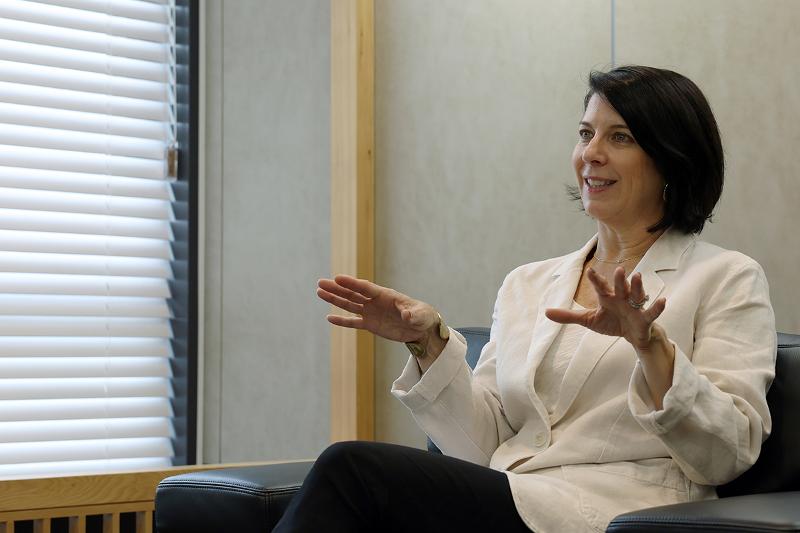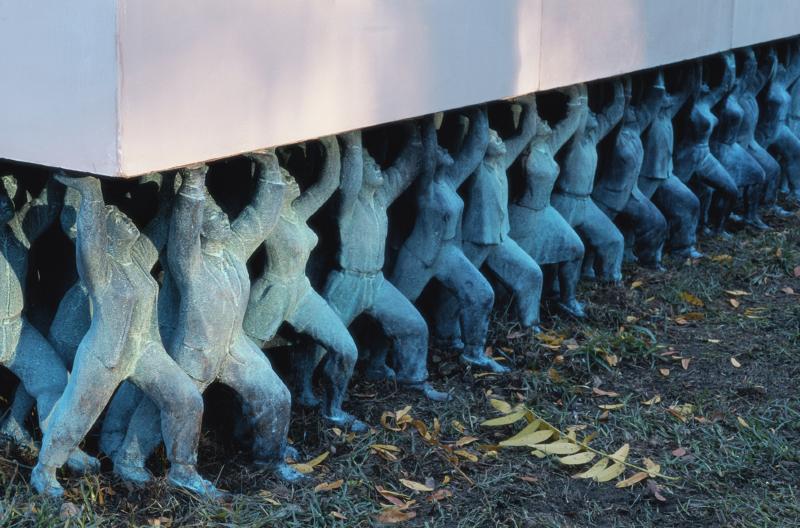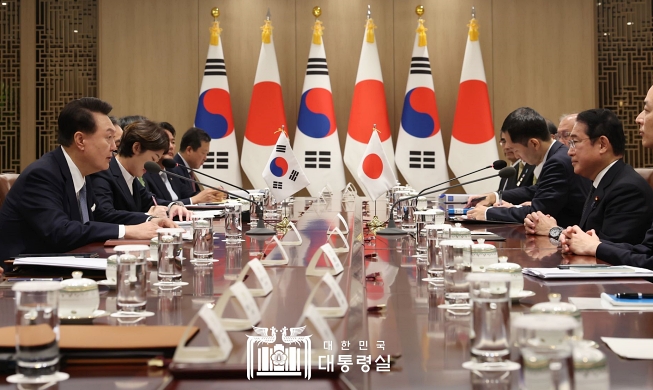- 한국어
- English
- 日本語
- 中文
- العربية
- Español
- Français
- Deutsch
- Pусский
- Tiếng Việt
- Indonesian

Aviva Rosenthal, director of the Office of Global Affairs of the Washington-based Smithsonian Institution, on July 25 explains her organization's strong interest in Korean art and culture. (Lee Jun Young)
By Yoon Sojung
"We are keenly aware of how important it is to learn with and from global partners like Korea to increase our reach, relevance and impact."
Aviva Rosenthal, director of the Office of Global Affairs of the Washington-based Smithsonian Institution, told Korea.net that this is why her organization is strongly interested in Korean art and culture.
The director is one of the key figures who led the signing in April last year of a memorandum of understanding (MOU) on cooperation and exchange in culture between the Ministry of Culture, Sports and Tourism and the Smithsonian during President Yoon Suk Yeol's state visit to the U.S.
As the world's largest museum, research and education complex, the Smithsonian is the de facto U.S. culture ministry. The MOU was the first between Korean and American organizations that govern cultural and arts institutions.
"Building face-to-face connections and then working on specific projects create trust together and visions for long-term cooperation," Rosenthal said. "We will pursue ways to expand cooperation among Korean museums and more museums and research centers at the Smithsonian Institution."
Korea.net on July 25 interviewed the director in person at KOCIS (Korean Culture and Information Service) Center in Seoul's Jung-gu District and through writing in early August. The following are excerpts from the interviews.
What did you discuss with staff from national museums while visiting Korea?
I met with directors and officials of the national museums to discuss ideas for future exchange and cooperation projects with an open mind. We discussed ways to expand cooperation among Korean museums and more museums and research centers at the Smithsonian Institution -- not only the Smithsonian's National Museum of Asian Art (NMAA), which has already been working with Korea, but also other museums such as the Hirshhorn Museum and Sculpture Garden, the Smithsonian American Art Museum and the Cooper Hewitt Smithsonian Design Museum, located in New York.
I was impressed by the national commitment toward culture and the values that the Korean government showed by supporting world-class cultural museums.
What progress have you seen since last year's MOU between Korea and the Smithsonian?
I would say the hosting of an exhibition, in collaboration with several national museums in Korea, of art from the collection of the late Samsung Group Chairman Lee Kun-hee scheduled for next year (2025) at the NMAA in Washington; and the appointment of Hwang Sunwoo, the inaugural curator of Korean art and culture at the NMAA, a newly endowed position thanks to a matching gift from the Korea Foundation, which was recently announced. Another meaningful result is the installation of "Public Figures," a commissioned work by Suh Do Ho (Do Ho Suh), in Washington this April as part of the NMAA's centennial celebrations.
What areas does the Smithsonian wish to expand exchanges in with Korean museums?
There are many opportunities to explore. These can also expand into thinking about digital and virtual initiatives as well as jointly hosted public programs, festivals and special events. I would also envision mutual interest in joint research efforts to tell new stories to American – and indeed global – audiences about Korean culture, art and history ranging from folk history to contemporary art such as contemporary media art like the "Decoding Korea" exhibition, which was held in Paris during the Summer Olympics.
Why are Smithsonian museums interested in Korean culture and arts?
We are the world's largest museum, research and education complex with the same mission since our founding: the increase and diffusion of knowledge. Our interest in Korean culture and arts and also science goes back many decades. Our NMAA houses a large collection of Korean objects, but equally we steward many anthropological objects in our National Museum of Natural History collection and Korean numismatic collections at our National Museum of American History.
The NMAA's Chuseok festival in 2023 (co-presented by the Korean Cultural Center of Washington) was hugely popular with audiences of all ages. We have great interest from our Smithsonian Center for Folklife and Cultural Heritage in engaging more deeply on topics such as cultural heritage practices, foodways, artisan craft and music. Our Hirshhorn Museum and Sculpture Garden has collected and featured artworks by artists such as Nam June Paik and Jae Ko. Our Cooper Hewitt Smithsonian Design Museum, located in New York, is also interested in making new and exciting connections. In a changing world, we are keenly aware of how important it is to learn with and from global partners like Korea to increase our reach, relevance and impact.
How many Korean cultural items does the Smithsonian own?
The Smithsonian Institution's collections are vast and represent a huge range of objects from astronomy to zoology and everything in between. A search of our public collections data from Korea, while not exhaustive, already shows over 23,000 objects, ranging from coins to stamps to ceramics to photography and much more.
One of the most impressive exhibitions that I am personally very moved by is the recently commissioned work "Public Figures" by Suh Do Ho, located at the front yard garden of the NMAA in Washington, which faces the U.S. Congress building. I have the daily honor of walking by this compelling piece, which sits outside of the NMAA facing Washington's National Mall, which welcomes thousands of visitors a day who come to experience one of the most iconic areas of our nation's capital. It is a powerful piece. Every time I pass by this piece to my office, I discover new things and think in fresh ways about the intersection of history, governments and people. Each of the people carved in the work who lifts the empty statue stand is described differently -- men, women, old and young. It's always changing my perception, which for me is one important characteristic about contemporary art. I am thrilled that it will remain up for audiences to experience through 2029.

The installation work "Public Figures" by Suh Do Ho is displayed at the front yard garden of the National Museum of Asian Art (NMAA) in Washington. This piece shows some 400 people lifting an empty statue from the bottom. (NMAA)
Where does Korea stand as a global partner of the Smithsonian?
We at the Smithsonian work with many countries institutionally. I would say that for Korea, it is quite unique to have so many museums display a wide spectrum of disciplines -- not only culture and history but also aerospace, science, design and even American art. I am so excited to engage and look for areas of collaboration and partnership.
We have always been proudly showcasing Korean and Korean-American artists' works to the American public and are looking forward to continuing that tradition in new ways. At the Smithsonian American Art Museum in Washington, one of our most celebrated works is "Electronic Superhighway" by Nam June Paik. It is a truly iconic piece for us. The museum is also home to Paik's archives as well.
How can bilateral cooperation contribute to the culture and arts of both countries?
Bilateral cooperation is all about relationships. Building face-to-face connections and then working on specific projects create trust together and visions for long-term cooperation. Through that trust, creative and interesting research can take place that benefits the people of both countries to illuminate new and insightful areas of research to be discovered.

Visitors to the Smithsonian American Art Museum in Washington look at the permanent display "Electronic Superhighway" (1995) by Nam June Paik, a work that is considered an iconic piece of the museum. (Yonhap News)
arete@korea.kr
